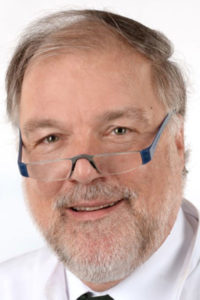
In 2021, an international expert group convened by the ADA published a consensus report on the clinical definition of “remission” in type 2 diabetes. During the Monday, June 6, session, Definition and Interpretation of Remission in Type 2 Diabetes, members of the consensus report writing group discussed the reasoning and rationale behind the recommendations in the report.
The session was livestreamed and can be viewed on-demand by registered meeting participants at ADA2022.org. If you haven’t registered for the 82nd Scientific Sessions, register today to access the valuable meeting content.
Michael A. Nauck, MD, Head of Clinical Research, Diabetes Division, at St. Josef Hospital and Professor at Ruhr University Bochum in Germany, opened the session with an overview of the criteria for diagnosing remission in type 2 diabetes
“For operational reasons, we said remission is A1C below 6.5 for more than three months without use of glucose-lowering medications,” Dr. Nauck said. “Diagnosing remission of type 2 diabetes in the absence of ongoing glucose-lowering medication may enhance the acceptance of the diagnosis and thus allow more benefits for the patients achieving it.”
He cautioned, however, that striving for remission should not prevent the use of medications providing substantial benefits for patients.
“With currently available therapies in mind, and certainly with respect to medications to be developed in the future, a second category of remission diagnosed with ongoing glucose- and body weight-lowering drugs should be considered,” Dr. Nauck said. “Further, science should evaluate whether patients achieving an A1C below 6.5%, with or without such drug treatment, have different future prospects—for example, regarding diabetes complications and life expectancy.”

Roy Taylor, MD, Professor of Medicine and Metabolism at Newcastle University and Newcastle Hospitals NHS Trust in the United Kingdom, further elaborated on the glycemic criteria for diagnosing remission and the time course required to determine that remission is in place.
While fasting plasma glucose and A1C are continuous variables, Dr. Taylor said the consensus report group’s decision to recommend A1C below 6.5% as the cutoff for the glycemic definition of type 2 diabetes remission was as much a practical decision as a clinical one.
“We needed a definition that was practical, simple, and it had to be easily stated, because the definition is really for the people with diabetes—they’re the people we’re serving,” he said. “Additionally, doctors need to be able to use the same definition, so a common language is used, and it can also be used for comparison between studies.”
As with the glycemic cutoff, Dr. Taylor said the decision to recommend a time frame of three months with an A1C 6.5% for diagnosing remission was a pragmatic one based on current understanding of the clinical course of type 2 diabetes.
“We’ve set this out, not as the right answer, but as a current working hypothesis, which can be challenged in future studies to see if these suggested boundaries or lengths of time should be changed,” he said.

Philip Schauer, MD, Professor of Metabolic Surgery and Director of the Bariatric and Metabolic Institute at Pennington Biomedical Research Institute of Louisiana State University, highlighted the impact of lifestyle and surgical interventions on achieving and maintaining remission.
“Both lifestyle intervention and surgery have been shown to cause remission,” Dr. Schauer said. “With lifestyle intervention, however, it seems to be short-lived so far, up to two or three years maybe. We need longer-term data to see how durable it is.”
With metabolic/bariatric surgery, on the other hand, there is strong data over the past decade that remission can be achieved and maintained, but further study is needed, he said.
“We need to achieve a better understanding of mechanisms. Whether it’s for surgery or diet and exercise therapy or even pharmacotherapy, we need to understand better how these procedures work,” Dr. Schauer said. “For type 2 diabetes, remission is about as close as we can get to a cure. Like Banting and Best and McCloud and the other discoverers of insulin, surgeons and medical doctors need to work together to deal with this very challenging disease.”
[sub-post-content]